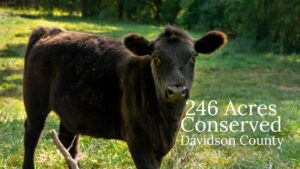
by Ruth Ann Grissom
January 5, 2017
Last fall, my dad got on his tractor and moseyed down Ophir Road to plow a neighbor’s garden. He’s done this every year since her husband passed. When he returned that evening, I asked if she was planning to sow a patch of greens. He shook his head. She wanted him to turn the soil so it would be ready to plant come spring. I was awestruck by the optimism and patience of a gardener well into her 80s.
Me, I don’t let my ground lie fallow. My 8’x8′ vegetable plot is prominently displayed in my front yard, so I feel some pressure to make it productive – and keep it looking somewhat attractive – year round. People talk about 3-season gardening in the Piedmont, but we shouldn’t overlook the potential to harvest fresh produce in winter.
Back in the day, before easy access to supermarket produce, virtually every gardener in the Uwharries planted a hurly burly mix of mustard and turnips. Some folks also included a tidy row of collards. These nutritious greens mature as winter arrives, but there’s widespread agreement they taste better after the first hard freeze. No wonder they were a mainstay on the tables of subsistence farmers. What a treat to have a fresh vegetable at a time when offerings were otherwise limited to those that had been frozen or canned.
In my front-yard garden, I prefer kale and Swiss chard for their beauty as well as their flavor. Siberian kale is colorful and ruffly, but I’m partial to lacinato, an heirloom variety grown by Thomas Jefferson at Monticello. The crinkly blue-green spears look especially fetching when glazed with raindrops or frost. Rainbow chard lives up to its name. Glossy leaves are shot with veins and stalks of red, orange, yellow, pink and white. In every way, they brighten the garden on drab winter days.
My celery looks puny compared to what you see in the grocery store, but I think the flavor is superior. Instead of harvesting an entire bunch at once, I cut off the outer stalks as needed and let the plant continue to produce. The NC Cooperative Extension (https://content.ces.ncsu.edu/growing-a-fall-vegetable-garden) offers a list of other enticing fall vegetables. If I had more room, I’d like to try Brussels sprouts and Savoy cabbage. I long to grow root vegetables, but the dreaded bull tallow in my yard doesn’t lend itself the deep, loose soil needed for turnips, parsnips, carrots or beets. For those, I’d need to construct a raised bed.
Piedmont gardeners shouldn’t overlook the ability to collect fresh herbs during cold weather. What better way to enliven hearty winter fare? In addition to perennials such as rosemary, sage, oregano, mint and thyme, I recently included a trio that bolt in summer’s heat. The parsley and dill are doing quite well and the cilantro is absolutely thriving. Heat-tolerant Mexican tarragon is readily available in our region these days, but next year, I’m determined to test the cold-hardiness of delicate French tarragon even if I have to grow it from seeds.
Production has fallen off since the hard freeze we experienced the first weekend in December, but the plants are holding their own. They hunker down and wait for warm spells we inevitably get throughout the winter. I’ve noticed a lot of new growth in the wake of the balmy temperatures we experienced around Christmas. A hoop cover or cold frame would promote growth even in the coldest weather, but my garden isn’t that sophisticated.
As this article goes to press, I’m bracing for snow and ice and temperatures in the single digits. Before this wretched weather hits, I’ll gather my celery, kale and parsley for a pot of soup and my cilantro for a batch of chili. I’ll mulch the plants with a loose blanket of pine straw, and then I’ll hope for the best. This will truly test the cold hardiness of my herbs and vegetables.
After weeks of over-indulgence around the holidays, many of us have resolved to eat healthier food in the coming year. Piedmont gardeners can already turn to our own patch of earth for fresh herbs and vegetables. And we can look forward to sowing a row of English peas in only a matter of weeks.